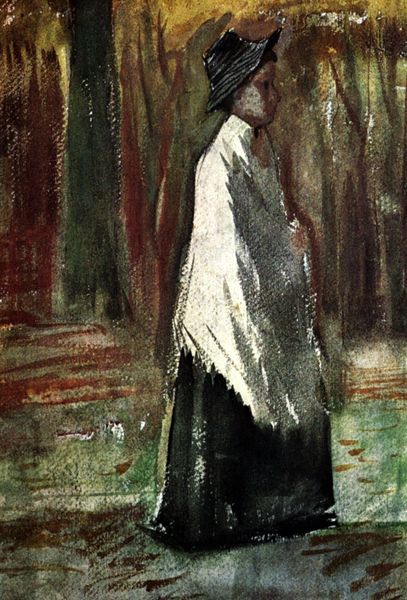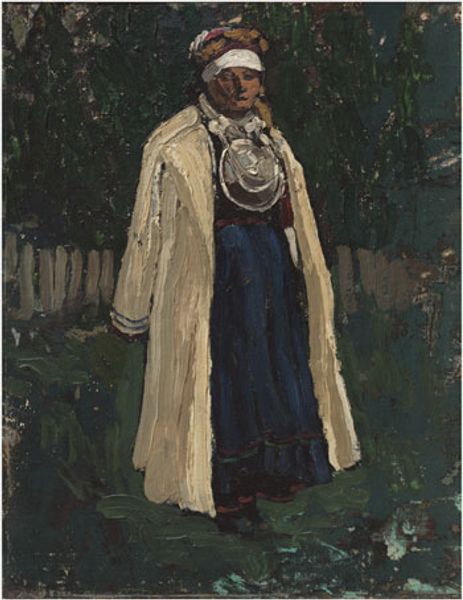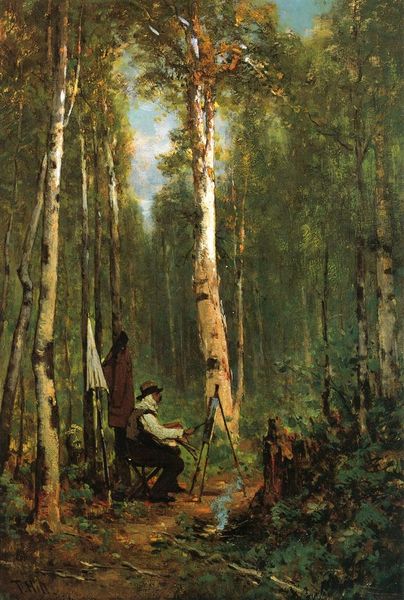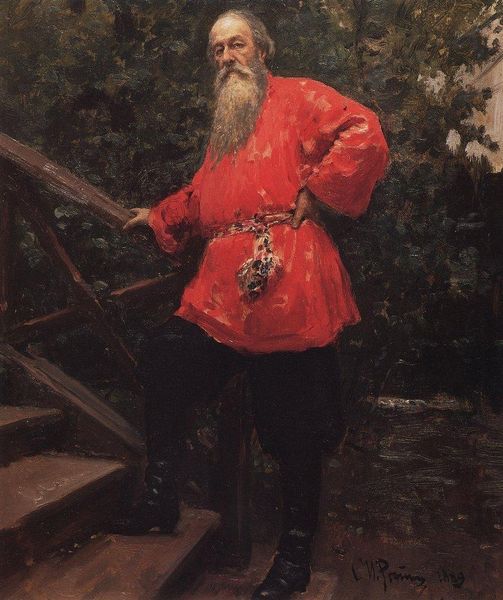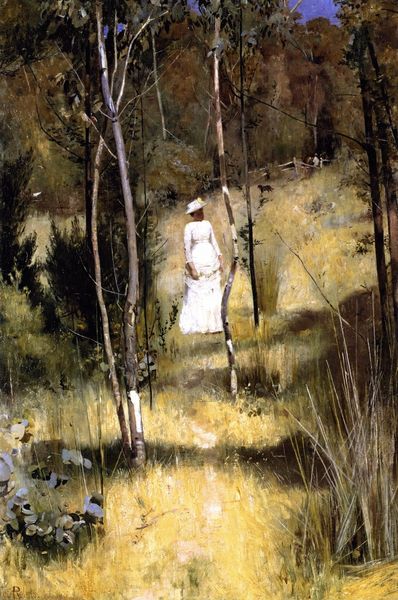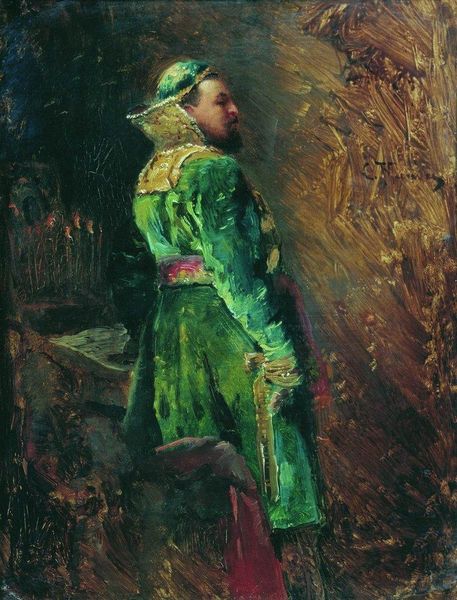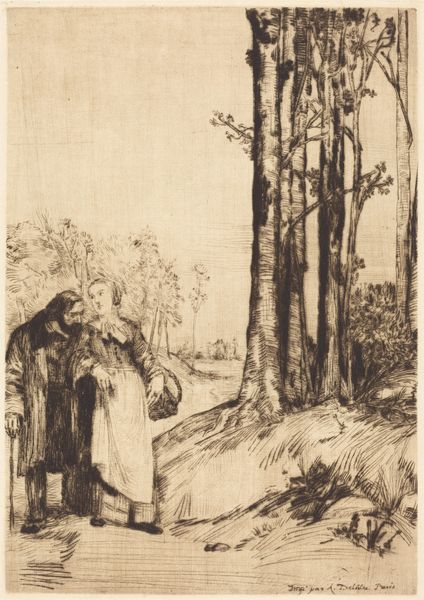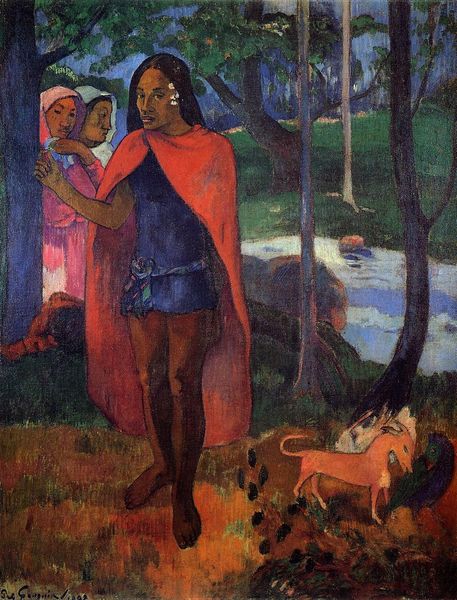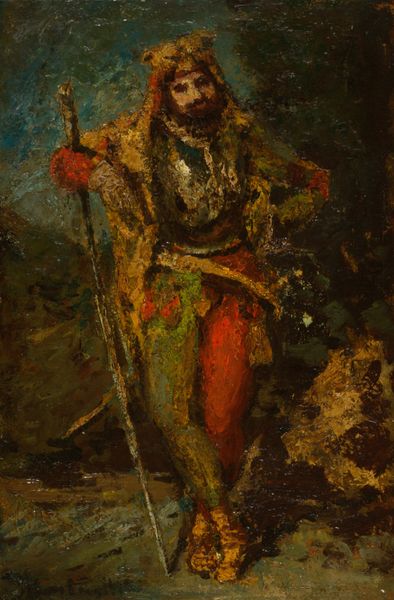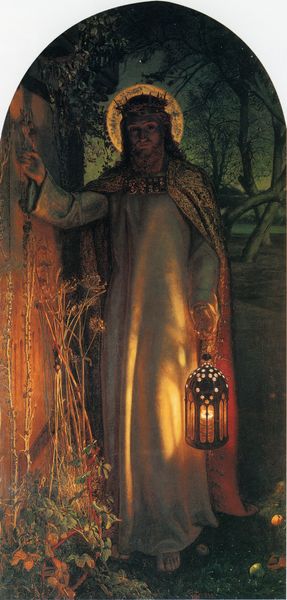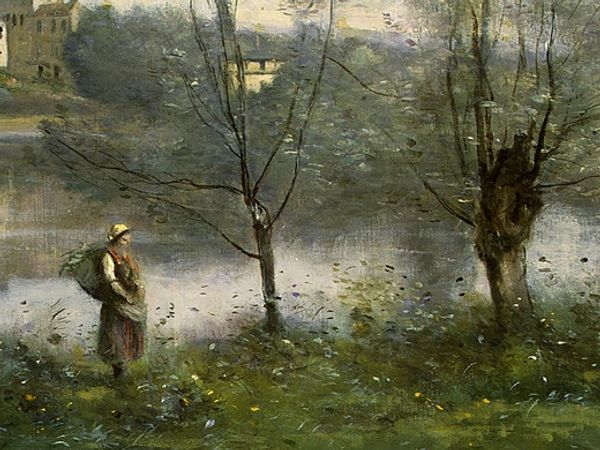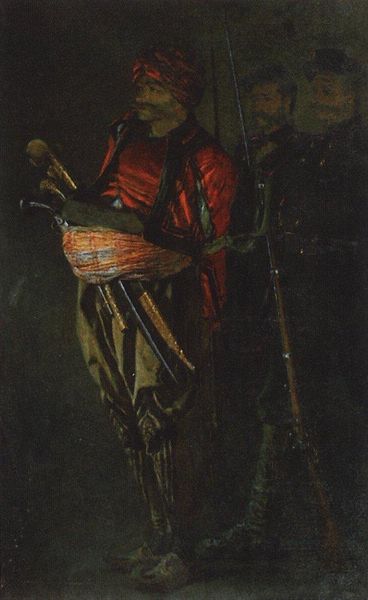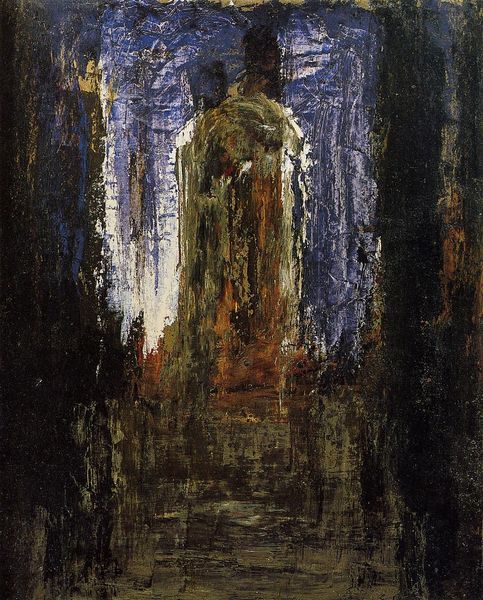
oil-paint
#
portrait
#
tree
#
oil-paint
#
landscape
#
oil painting
#
christianity
#
symbolism
#
russian-avant-garde
#
watercolor
#
christ
Copyright: Public domain
Curator: Immediately, there's something ethereal about this painting. The palette feels like mist, and that young figure… he projects such quiet solemnity. Editor: Indeed. This is Mikhail Nesterov's "Tsarevich Dimitry," created in 1899. What's fascinating is how Nesterov weaves together portraiture, landscape, and symbolism here. The oil paint gives everything such tactile depth, a materiality that contrasts with the almost otherworldly subject. Curator: It's the landscape itself – those birch trees, so iconic of Russia – that root it in the physical world. Look at the meticulous brushwork in the cloak; it’s incredibly detailed for a figure that's meant to also exist in a spiritual space. Is Nesterov interested in blurring the lines between the tangible and intangible? Editor: I think you've hit on something. The portrayal of Tsarevich Dimitry as a child-saint highlights the power of the church, of the political symbolism vested in these figures, both in Imperial Russia and today, and it is crucial to remember that in that same year, 1899, other avant-garde figures were pushing entirely against this aesthetic. How does this painting reinforce the social and institutional function of religious art? Curator: We see here, literally, how raw materials—pigments, fabric for clothing, wood used for building, everything—became implicated in structures of meaning, power, and belief. Every detail here speaks volumes about social history, of Nesterov engaging the religious craft production through the visual weight, color, and precise details that imbue holiness. Editor: Precisely, it’s as if Nesterov uses that very softness in execution to underscore Tsarevich Dimitry’s vulnerability, cementing his tragic story and manipulating it as an element for the Russian empire. Curator: The consumption of paintings like this in late Imperial Russia also adds another layer; the elite seeking to affirm traditions amidst growing social and political upheaval. Editor: An image like this tells a much wider tale about political beliefs, the institutions that supported them, and, in some cases, even exploited them for cultural gain. It seems the ethereal touch and detailed realism serve both to sanctify and perhaps… memorialize? Curator: Exactly! Thank you for those insights. This work brings forward the weight of history with ethereal strokes. Editor: It does indeed! Thanks to you too, this experience reminded us of how political elements might also become artistic expression.
Comments
No comments
Be the first to comment and join the conversation on the ultimate creative platform.
